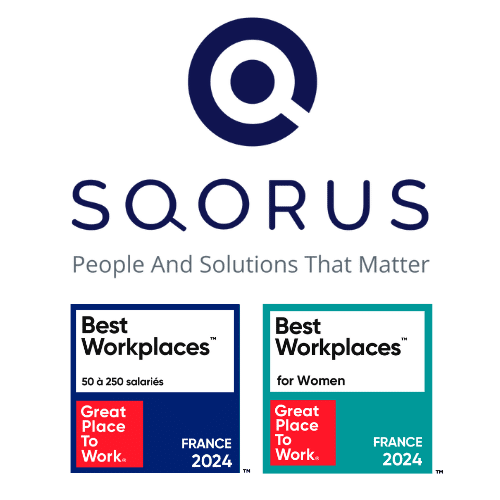Start by believing in it yourself!
Implementing an HRIS can be frightening at first, because it requires adapted skills. However, the HR directors of large companies are convinced that it allows them tooptimize their processes by facilitating the collection of information through the implementation of a computerized and collaborative solution. By improving productivity, your teams will be able to concentrate on high-value tasks, enabling the department to improve its performance.
Beyond the internal benefits to the department, the choice to use an HRIS contributes to improving the employee experience by enhancing the employer brand, for example. Investment in employer branding means halving recruitment costs!
Convinced? Now it’s time to convince your management. To do this, proceed in several steps.
Rely on the IT Manager
When requesting quotes, call on the expertise of your IT Manager. In addition to the functionalities required, he or she will also look into certain essential technical details that you may not have thought of: where will the HRIS be hosted? will a SaaS mode HRIS be used? …
By making the most of his expertise, you make the IT manager an ally both upstream and downstream of your project… Because if you get the green light from management, who better than him to write the specifications and check that your solution is properly installed?
Get the Finance Manager on your side
How do you do it? By demonstrating that the main benefits of HRIS are cost and time savings! To do this, carry out a number of estimates, with and without HRIS, for example, when drawing up a pay slip, or when setting up personalized questionnaires as part of a training evaluation.
When calculating, beyond the time spent and the hourly cost of the employee, include the costs related to non-investment risks (RONI) such as those that may result from a manual error or data loss. This will make your estimate more accurate.
A tip: when presenting your estimates and quotes received, emphasize the sources of savings identified and highlight the benefits that this would also have for the Finance department (an HRIS generally has export and reporting functionalities).
Present your management with a complete project
Inventory of current processes, identification of current needs, introduction of the solutions analyzed, comparison (advantages and disadvantages of each), presentation of the project implementation schedule… Your presentation should include all these points in order to provide all the elements necessary for management to make a decision.
In addition to the content, pay attention to the form of your presentation. Whether it’s a PowerPoint or a Word document, the most important thing is that the document you hand over shows off your work and convinces your management to invest in an HRIS.
What tools can you use to manage your HR strategy?
Optimize your HR strategy and discover the essential management tools you need to achieve your objectives. Don't miss this opportunity to successfully manage your HR projects.
See also our feature on "HR strategy management tools".
- What are the key issues facing HR departments today?
- Organization, talent management, recruitment: priority HR projects?
- Human resources management: what HR strategies for the future?
- Best practices to manage your HR strategy in an optimal way
- The different HR management tools to carry out your HR strategy
- HRIS software: the different areas of intervention for the HR function
- How to convince your management to invest in an HRIS tool?
- Is it necessary to be accompanied in the management of an HR strategy?
- What indicators should be defined to measure the performance of an HR strategy?
- HR strategy: how to achieve effective HR reporting?
- Who should drive HR projects in the company?
- Setting up a working group for an HR project: who should be involved?
Contact
A project? A request?A question?
Contact us today and find out how we can work together to make your company’s digital future a reality.













